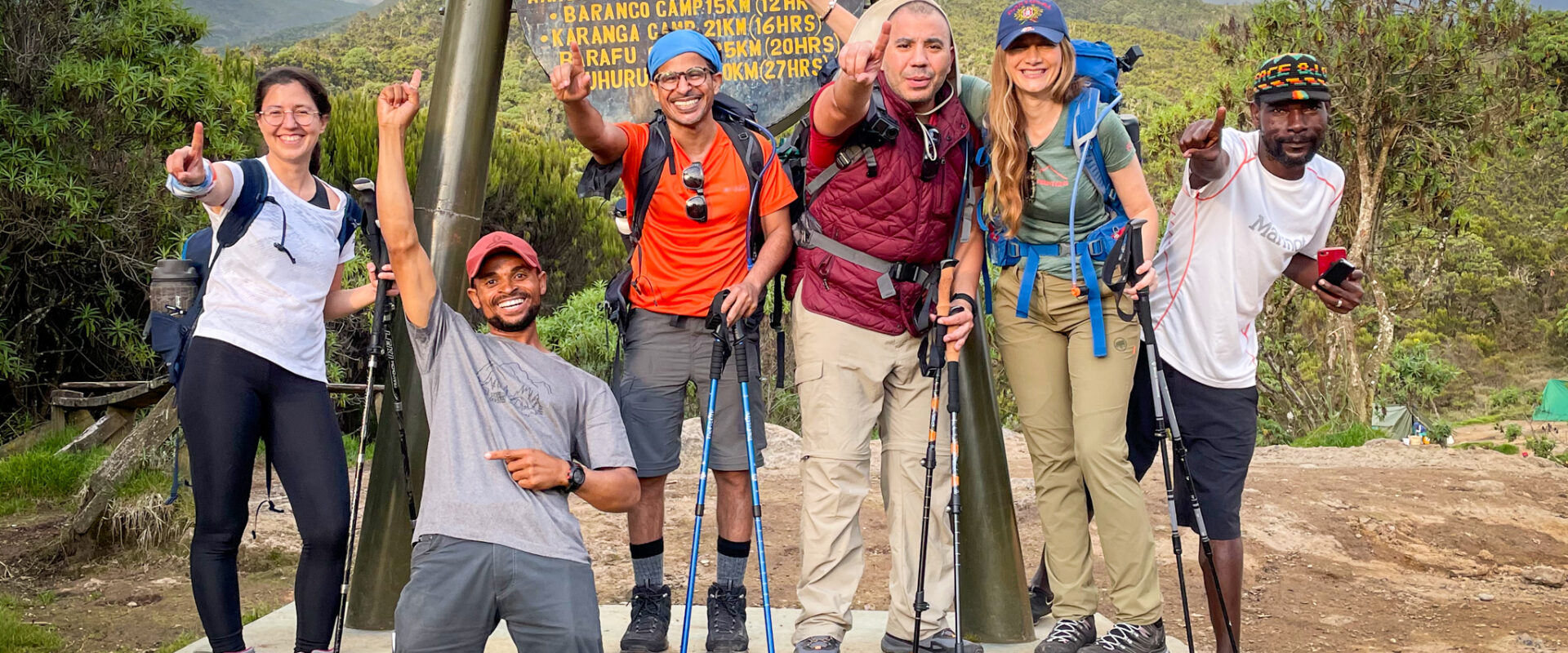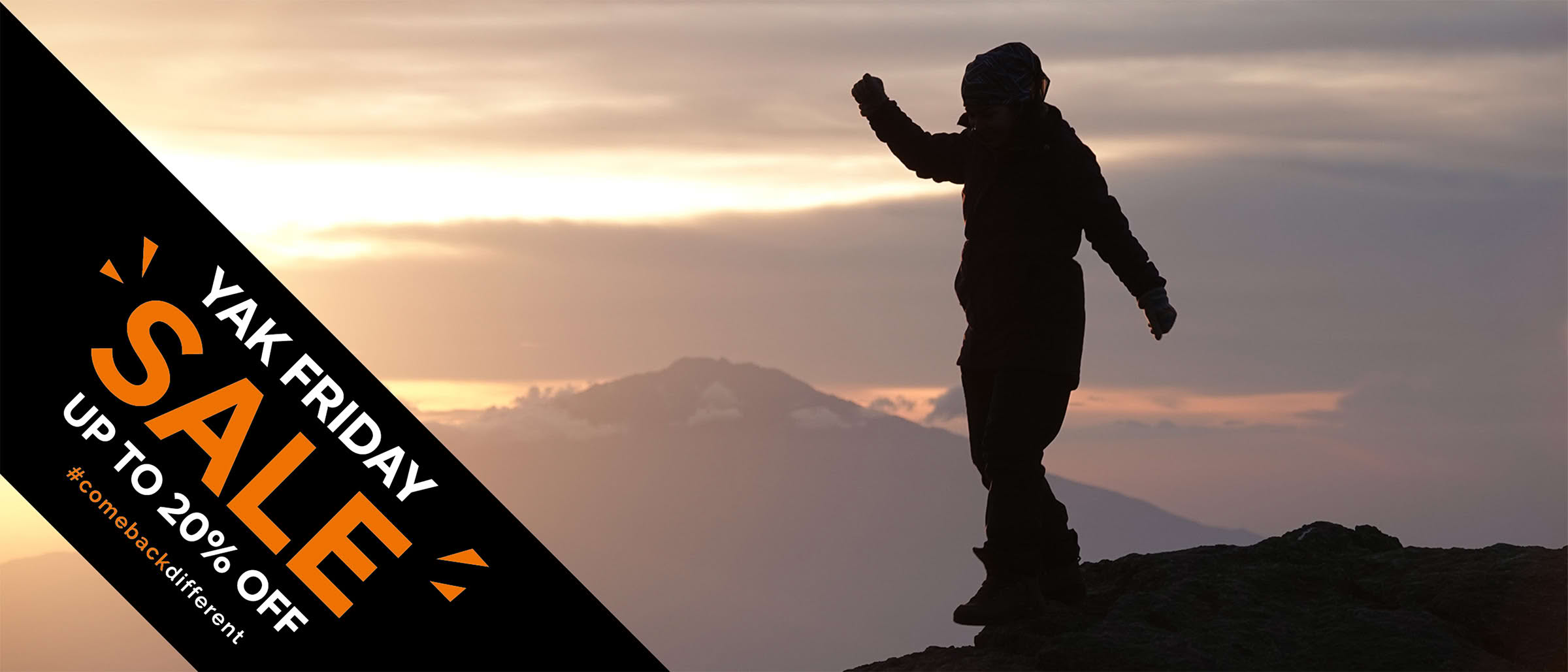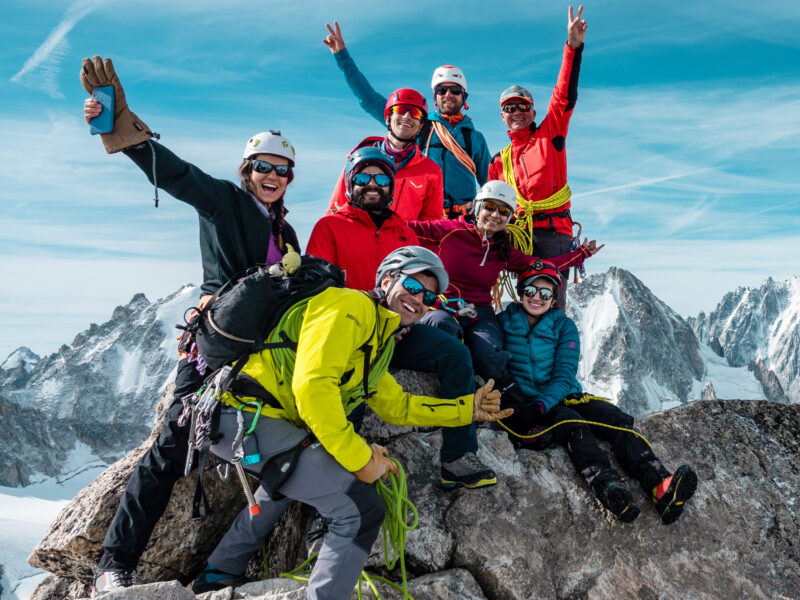BY Rami Rasamny | September 10 2024
How to Choose the Right Shoes for Kilimanjaro

Climbing Mount Kilimanjaro is an exhilarating adventure that requires meticulous preparation, especially when it comes to your footwear. The right pair of shoes can make the difference between a successful summit and a miserable experience. Here’s a comprehensive guide to help you choose the perfect shoes for your Kilimanjaro trek, focusing on waterproofing, ankle support, comfort, ensuring the heel doesn’t lift, and more.
Waterproofing
Kilimanjaro’s diverse climate zones mean you’ll encounter varying weather conditions, from rain and mud in the rainforest zone to snow and ice near the summit. Waterproofing is crucial to keep your feet dry and comfortable throughout the trek. Look for boots with the following features:
- GORE-TEX or Similar Membrane: Boots with a GORE-TEX lining or similar waterproof membranes offer reliable protection against water while allowing your feet to breathe.
- Sealed Seams: Ensure the boots have sealed seams to prevent water from seeping through the stitching.
- Durable Outer Material: Opt for boots made from high-quality leather or synthetic materials known for their water-resistant properties.
High Ankle Support
The terrain on Kilimanjaro is rugged and uneven, making high ankle support essential to prevent injuries such as sprains. Proper ankle support also enhances stability, especially when carrying a heavy backpack. Look for the following features:
- High-Cut Boots: Boots that extend above the ankle provide better support and protection.
- Sturdy Lacing System: A robust lacing system helps secure the boots firmly around your ankles, reducing the risk of twisting.
- Padded Collar and Tongue: Extra padding around the ankle area increases comfort and support.
Comfort
Comfort is paramount on a multi-day trek like Kilimanjaro. Pay special attention to how the boots fit, particularly when walking downhill, as this can cause your toes to touch the front of the boot, leading to discomfort or injury. Consider the following:
- Proper Fit: Your toes should have enough room to wiggle, but not so much that your feet slide forward. Aim for about a thumb’s width of space between your toes and the front of the boot.
- Cushioned Insoles: Quality insoles with good arch support can enhance comfort and reduce fatigue.
- Breathability: Despite the need for waterproofing, your boots should also be breathable to prevent excessive sweating and blisters.
Ensuring the Heel Doesn’t Lift
Heel lift within the boot can cause blisters and instability, particularly when stepping uphill. Ensure a snug fit around the heel with these tips:
- Heel Cup: Look for boots with a well-formed heel cup that cradles your heel securely.
- Lacing Techniques: Use lacing techniques like the heel lock or surgeon’s knot to keep your heel in place.
- Customized Fit: Some boots come with customizable fit options, such as adjustable insoles or heat-moldable liners, to better conform to your foot’s shape.
Socks
The socks you intend to wear during the trek are a crucial part of the equation. Always try on boots with the same socks you plan to use on Kilimanjaro to ensure the best fit. Here’s what to consider:
- Material: Merino wool socks are a popular choice for their moisture-wicking, insulating, and odor-resistant properties.
- Thickness: Choose socks with adequate cushioning, but not so thick that they make the boots too tight.
- Fit: Ensure the socks fit well and do not bunch up or cause pressure points.
Weight of the Boots
While sturdy, high-cut boots provide excellent support and protection, it’s also important to consider their weight. Heavy boots can contribute to fatigue, especially on long hikes. Look for boots that balance durability and support with a manageable weight.
Traction and Sole Design
The terrain on Kilimanjaro is varied, including loose scree, rocks, mud, and snow. Therefore, good traction is essential to prevent slips and falls. Look for these features in the sole design:
- Deep Lugs: Deep, multi-directional lugs provide better grip on various surfaces.
- Vibram Soles: Many high-quality hiking boots feature Vibram soles, known for their durability and excellent traction.
- Stiffness: A semi-rigid or rigid sole offers better support on uneven terrain and helps reduce fatigue.
Durability
Your boots need to withstand the harsh conditions of Kilimanjaro. Pay attention to the construction and materials:
- Quality Stitching: Double or triple stitching indicates better durability.
- Reinforced Toe and Heel: Extra protection in these areas can help prevent damage from rocks and other obstacles.
- Brand Reputation: Boots from reputable brands known for their durability and performance in rugged conditions are often a safer bet.
Personal Preferences and Foot Shape
Everyone’s feet are different, so what works for one person might not work for another. Consider your own foot shape and personal preferences:
- Width: Some boots come in different widths to accommodate narrower or wider feet.
- Arch Support: High, medium, or low arch support can make a significant difference in comfort.
- Try Multiple Pairs: Don’t settle on the first pair you try. Test multiple pairs to find the best fit for your feet.
Professional Fitting
If possible, visit a specialty outdoor retailer where you can get a professional fitting. Experienced staff can provide valuable advice and ensure that the boots fit correctly, taking into account the socks and insoles you plan to use.
Testing in Varied Conditions
Before your trek, test your boots in conditions similar to what you’ll face on Kilimanjaro:
- Long Hikes: Take them on long hikes to ensure they remain comfortable over extended periods.
- Varied Terrain: Hike on varied terrain, including rocky and muddy trails, to ensure the boots provide adequate support and traction.
- Wet Conditions: Test the waterproofing by hiking in wet conditions or through shallow streams.
Emergency Preparedness
Lastly, consider the following for emergency situations:
- First Aid Kit: Include blister treatment supplies in your first aid kit, such as moleskin, blister pads, and antiseptic ointment.
- Spare Laces: Bring an extra pair of laces in case the originals break.
- Foot Powder: Foot powder can help keep your feet dry and prevent blisters.
In conclusion, choosing the right shoes for Kilimanjaro involves considering waterproofing, high ankle support, comfort, and a secure fit, especially with the socks you’ll be using. Take the time to find the perfect pair, and your feet will thank you as you stand at the Roof of Africa. By paying attention to these details and properly testing your boots beforehand, you’ll be well-prepared for the challenges and rewards of your Kilimanjaro adventure.
About The Author
Rami Rasamny is the founder of Life Happens Outdoors, a premium adventure travel community dedicated to transforming lives through curated outdoor experiences. A mountaineer and entrepreneur, Rami has led teams on some of the world’s most challenging peaks, from the Alps to the Himalayas. His mission is to make adventure accessible, transformative, and safe for all who seek to push their limits and Come Back Different.
About Life Happens Outdoors
At Life Happens Outdoors, we believe in the power of nature to transform lives. As proud members of the Adventure Travel Trade Association (ATTA) and the World Travel & Tourism Council (WTTC), our team of certified guides and outdoor professionals is committed to the highest standards of safety, sustainability, and excellence.
Discover more about our story and mission on our Meet LHO page, or explore our curated adventures such as the Tour du Mont Blanc Trek, the Climb of Kilimanjaro, and Chasing the Northern Lights.















